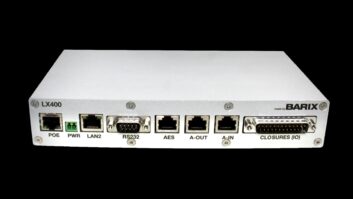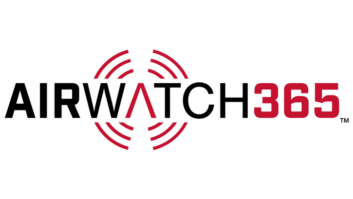
Gone are the days of cart decks and turntables. And with it, the complications and uncertainties of setting up for a live broadcast.
At least, that was the hope for engineer Mark Wittkoski, whose various roles as a maintenance engineer and owner of a contracting business meant it was vital to find a way to better handle the cornerstone of every good local radio station: a station remote.
Whether it is covering a major sporting event or putting together a play-by-play baseball game for a local student station, the needs were the same: pulling off a live on-the-road remote with technology that is flexible and reliable. And all the better if it can offer superior data capabilities, reduced operating costs, streamlined workflows and remote-control functionality.
A Modern Solution
For broadcasters like Wittkoski, who has worked as an engineer for Cumulus Broadcasting and as a consultant for the internet station at Grand Valley State University in Michigan, the answer is found in the form of IP remote codec technology. As radio broadcasters move away from relying on legacy ISDN and POTS networks (which can suffer from issues such as intermittent quality and a high cost of deployment), radio stations are finding that remote IP codecs are relatively simple to operate and configure, offer a wide range of IP connection options and effectively enable remote broadcasts.
The technology also fit the bill for a niche broadcaster. The host of the ‘Ask Noah Show’ was working with a local low-power FM station to create a call-in talk show focused on open source technology. The trouble was that the host was often on the road — often at the last minute, said Noah J. Chelliah, president of the IT consulting company Altispeed Technologies.
“I needed a broadcast system that would fit in a carry-on case, with low latency to facilitate call-ins, and (most importantly) reliable high-quality audio,” he said. “It needed to be something I could have up and running in 10 minutes. So I knew what I wanted, I just didn’t know if it existed.”
The answer was an IP remote codec with studio-in-a-box functionality. That solution allowed Chelliah to not only facilitate a remote broadcast but also to offer streaming, recording and playback functionality as well.
Now the ‘Ask Noah Show’ is being broadcast live from a custom studio at Altispeed headquarters. And half of the show’s broadcasting takes places using a remote IP codec on location while he is traveling.
“The show continues to grow, but it would have likely never gotten off the ground if it weren’t for my mobile broadcast kit,” he said. “My audience is a technically savvy crowd. You just can’t have the guy telling you what technology is best using second class gear to do the show.”
Now, a new iteration delivers more than simply enabling station remotes. A key function in some of today’s newer systems is the ability to control codecs remotely via the cloud. As a result, users can receive online/offline status, connection status, link quality, remote monitoring and adjustment of input levels. They also can remotely dial and hang-up connections from the studio.
“Remote control is a powerful tool for broadcasters,” said Charlie Gawley, VP of sales for the codec manufacturer Tieline. “And by also integrating record and playback capability into a remote codec, engineers can easily perform an entire remote away from the studio. This is giving some stations a competitive advantage by allowing them to offer streaming, recording and playback functionality. No other external equipment is required, just a portable remote codec.
Options for Engineers
According to Gawley, radio station engineers should be able to configure, connect and monitor all remote codecs in the studio via a cloud codec controller. This gives a station the ability to monitor connection status, link quality and audio levels, make remote adjustment of those audio levels, remotely dial and hang-up codec connections from the studio, monitor and control the entire network of IP codecs and view and manage alarms.
Because of this, a growing number of radio broadcasters are relying on IP codec technology for remote broadcasts. Take for example the international broadcaster Crocmedia, an Australian-American radio and TV distribution company. The station’s ‘Off The Bench’ radio show is tasked with covering one of the biggest games in sports, and for the last six years has travelled to radio row to cover the Super Bowl. In 2018, that included getting ready for the big game by using IP codec technology to broadcast the event from the U.S. back to Australia.
Audio-over-IP looks to be part of the broadcast network infrastructure of the future.
Now, broadcasters are looking at how remote-control functionalities within today’s new remote IP codecs could help them get there.
Additional Resources
Crocmedia Broadcasts the Big Game with Tieline ViA
The Australian radio show ‘Off The Bench’ makes a 9,000-mile trek to cover the Super Bowl with one specific technology packed in its carry-on bag.
Managing the Transition from ISDN to IP
This white paper offers a look at how radio broadcasters can seamlessly transition from an ISDN network infrastructure to an IP network environment.
Australia’s Nova Breakfast Show Walks to Work — Live
It’s a memorable day when a morning show moves out of the studio and on to the street.







